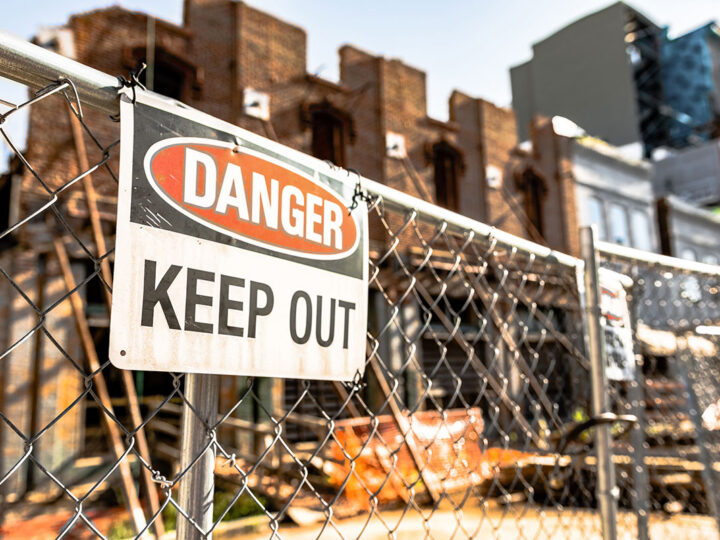
Construction Observation Duties Do Not Make an Engineer Responsible for On-Site Safety
It is common for engineers to be named as defendants in lawsuits by construction workers who are injured while working at the construction site. Often, an injured worker’s attorney will name everyone involved in the project and determine who is liable later, or even worse, invent a reason why a party might be liable. As in most circumstances, the engineer’s contract and/or conduct will determine the duties of the engineer and, thus, whether the engineer can possibly have any liability for an on-site construction accident.1
by Sarah A. Johnson, Esq.
Accordingly, where engineers have no construction phase duties and/or do not perform any on-site services, the lawsuit is usually resolved in the engineer’s favor via a dispositive motion because the engineer has no duty to warn the workers of any unsafe conditions that might exist.2 However, plaintiffs’ lawyers will almost always try to prevent summary judgement, or the granting of a dispositive motion, where the engineer has construction observation duties. Inevitably, plaintiffs’ lawyers argue that the engineer’s construction observation duties provide the engineer with control over the site and responsibilities regarding safety measures at the site or, at the very least, allow the engineer an opportunity to witness and correct the unsafe condition.
In reality, however, the engineer’s construction observation duties usually have nothing to do with safety and do not provide the engineer with any kind of control over the construction site. Instead, the engineer usually contracts to make periodic visits to the site in order to familiarize himself or herself with the progress of the work and to determine if the work is proceeding generally in accordance with the contract documents. As such, absent proof that the engineer assumed duties outside of his or her contract or actually observed a condition that he or she recognized as unsafe and failed to take action, the engineer should have no duty to construction workers with respect to safety measures and thus no liability for construction site accidents.3
However, an engineer will certainly be subject to liability if he or she takes on duties to supervise the construction, including safety measures and/or hazards at the site.4 It will likewise be difficult for an engineer to escape liability where his or her contract or conduct leads to ambiguity about his or her duties with respect to construction site safety.5 Thus, it is always best for an engineer to include language in his or her contract that expressly states that the engineer does not assume control over the site or safety measures and does not have any responsibility for construction means, methods, techniques, sequences, procedures, or safety precautions.
Have you visited our website lately? We have numerous risk management materials such as videos, articles, webinars, a risk assessment survey, and more. You’ll also find our full product line-up offered to ASCE members. Visit asceinsurance.com/pl today.
1Frampton v. Dauphin Distribution Servs. Co., 648 A.2d 326, 328 (Pa. Super. Ct. 1994); Wartenberg v. Dubin, Dubin & Moutoussamy, 630 N.E.2d 1171, 1174 (Ill. App. Ct. 1994).
2E.g., Frampton, 648 A.2d at 328-329 (finding that an architect hired to prepare construction drawings and a foundation design for a proposed warehouse did not have a duty to warn construction workers of an overhead power line); Patin v. Indus. Enters., Inc., 421 So.2d 362, 366 (La. Ct. App. 1982) (finding that an engineer hired to draw plans for a building next to an electrical servitude has no duty to provide instructions as to how to safely proceed with construction).
3Baker v. Sweet Assocs., Inc., 278 A.D.2d 615, 428-29 (N.Y. App. Div. 2000) (finding that engineer who contracted to make visits to the site to observe the progress and quality of the work did not breach any duty owed to the injured worker); Wartenberg, 630 N.E.2d at 1173, 1175 (finding that an architectural firm that agreed to observe the construction for the purpose of determining whether it is generally in the agreement with the documents was not in charge of the site and owed no duty to the injured worker); Block v. Lohan Assocs., Inc., 645 N.E.2d 207, 211, 222-23 (Ill. Ct. App. 1993) (finding that architect whose duties were to furnish plans, specifications, and calculations and to review and approve work for conformity to the architectural and engineering design intent had no duties regarding worker safety as he was not in charge of the work); Marshall v. Port Authority of Allegheny County, 568 A.2d 931, 936-37 (Pa. Super. Ct. 1990) (finding that an engineer who contracted to monitor the construction to assure the delivery of the specified systems and facilities in accordance with the contract drawings and specifications did not have a duty with respect to jobsite safety hazards); Wheeler & Lewis v. Slifer, 577 P.2d 1092, 1094, 1096 (Col. 1978) (finding that an architect who agreed to make periodic visits to familiarize himself with the progress and determine in general if the work was proceeding in accordance with the construction documents had no duty to supervise the construction precautions taken for the safety of the workmen).
4Moore v. PRC Eng’g, Inc., 565 So.2d 817, 819-20 (Fla. Ct. App. 1990).
5Heath v. Huth Engineers, Inc., 420 A.2d 758, 759 (Pa. Super Ct. 1980).






